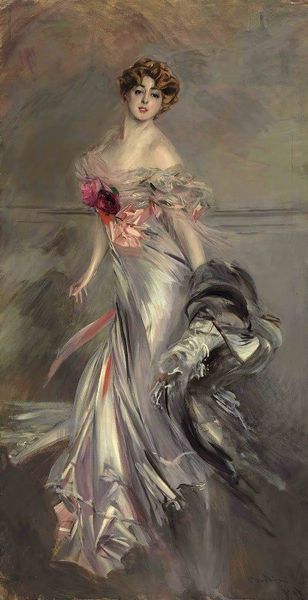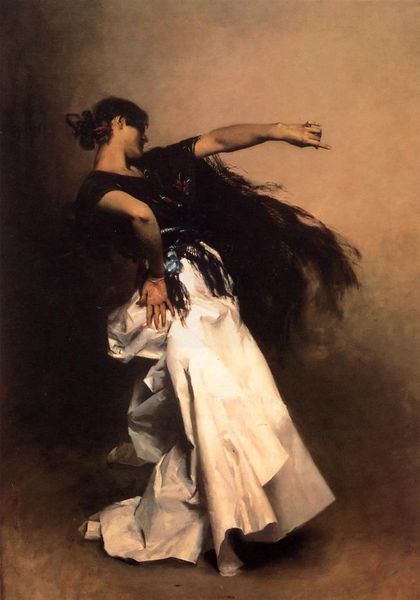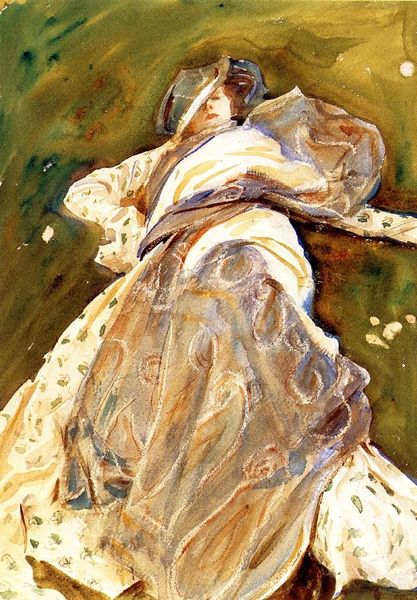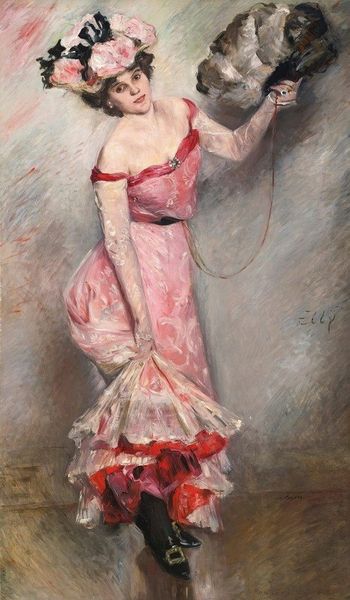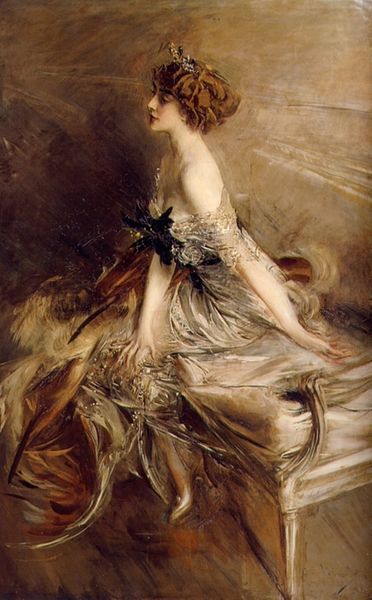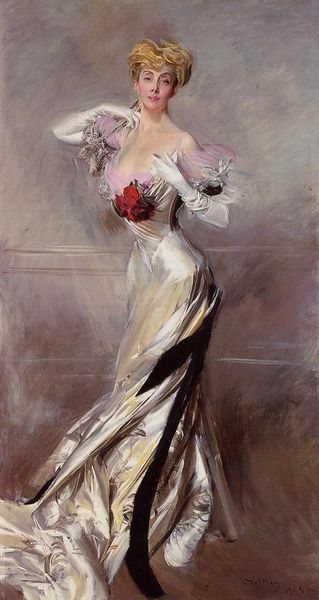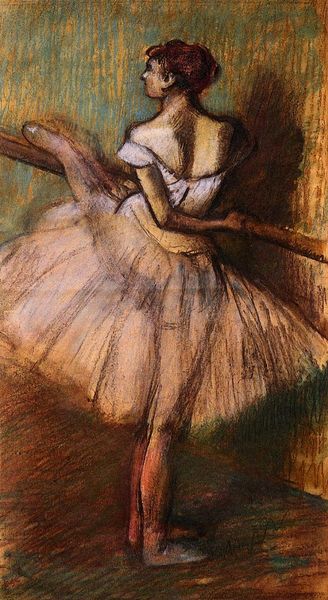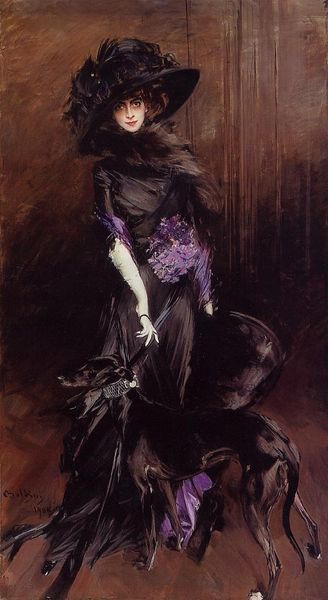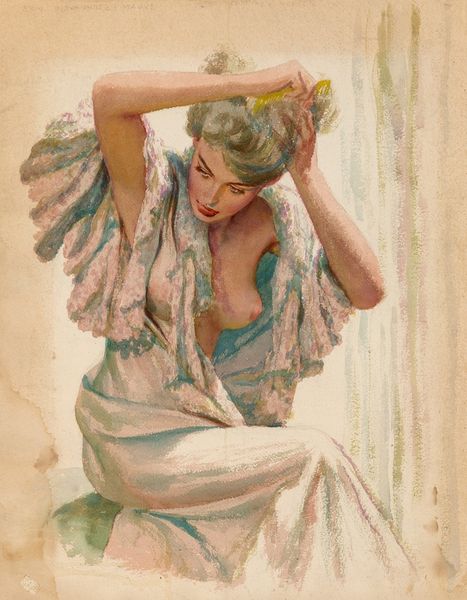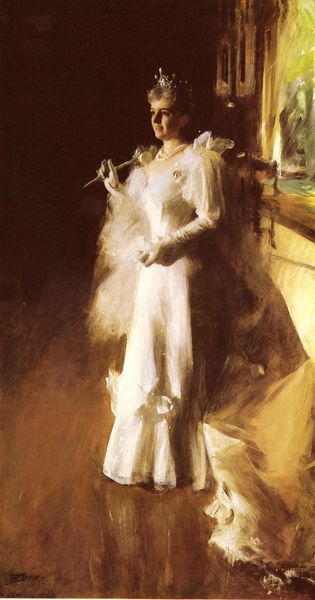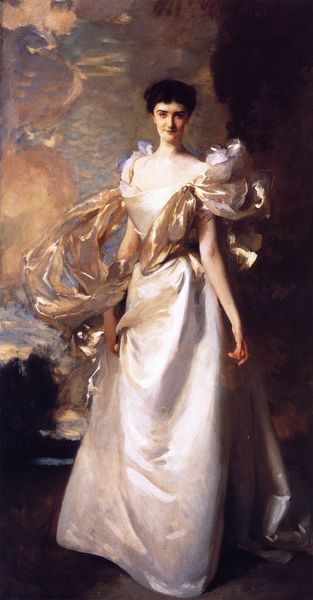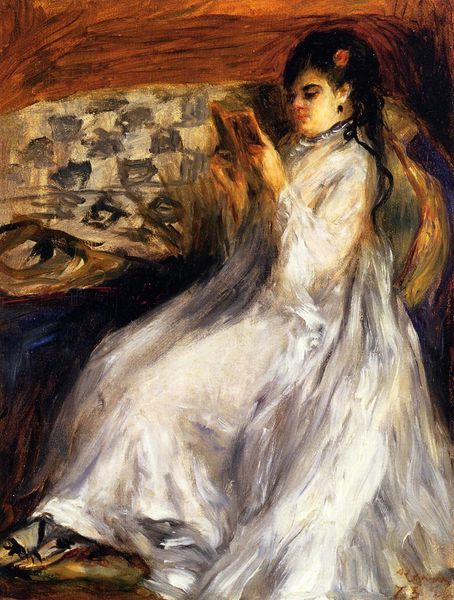
Dimensions: 137.2 x 88.9 cm
Copyright: Public domain
Curator: Immediately striking. It evokes a powerful sense of motion, like a captured moment in a vibrant performance. Editor: That's precisely the feeling. We're looking at John Singer Sargent's "La Carmencita," an oil on canvas painted around 1890. The work resides in a private collection. What stands out to you in terms of materials? Curator: The texture is key. Note how Sargent renders the swirling shawl. It isn't just painted; it is built up with visibly layered strokes of oil paint. You can see the labour involved in recreating that fleeting effect of motion. It really plays with the viewer's perception of dynamism. And the visible brushwork suggests a manufacturing process akin to dressmaking: pleating, layering and bunching the textiles to create complex effects on a figure that has been produced by repetitive processes. Editor: And consider Carmencita herself. In Spanish dance, the shawl is as much a tool of expression as her body. It creates lines and gestures of emphasis. Her raised hand draws your eye outward and creates that very important cultural language between her and the spectator, whoever they may be. Her costume and shawl tell us this is an embodied art. Curator: The brown background serves a crucial purpose; it prevents visual distraction and serves to make her figure and garb look very distinct. Without this neutral hue the details would just dissolve and fall flat, given its tonal uniformity. I suppose it may have also saved the artist money because they wouldn't have to shell out for a costly array of colourful pigments. Editor: It also creates a symbolic depth. The stark contrast focuses our attention, directing our gaze towards a timeless archetype. This woman isn’t just dancing but conjuring ideas about spectacle. Do you think the impressionist style amplifies the dance somehow? Curator: The style makes this a piece about both production and sensation; the quick brushstrokes mirror the speed of a dancer, while her expression captures a moment of dramatic flourish and expression. Ultimately, I am very pleased to learn from and discuss the labour of performance as it unfolds with someone knowledgeable of these particular codes. Editor: The piece reminds me that our bodies, memories, and art remain forever intertwined and continue to affect future practices of producing and perceiving.
Comments
No comments
Be the first to comment and join the conversation on the ultimate creative platform.
